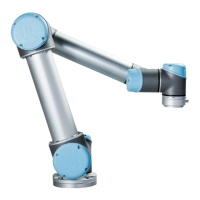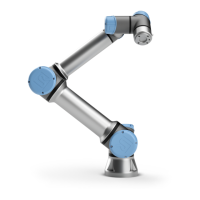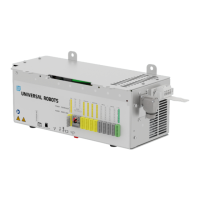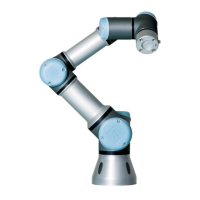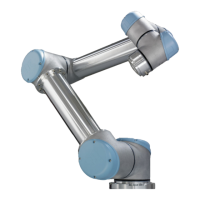14.5 Command: Fixed Waypoint
MoveL
WP_I
WP_1 (blend)
WP_2 (blend)
if (digital_input[1]) then
WP_F_1
else
WP_F_2
WP_I
WP_1
WP_2
WP_F_1
WP_F_2
*
Figure 14.5: WP I is the initial waypoint and there are two potential final waypoints WP F 1 and WP F 2,
depending on a conditional expression. The conditional if expression is evaluated when the robot arm
enters the second blend (*).
1. MoveJ to MoveJ (Pure Joint space blend)
2. MoveJ to MoveL
3. MoveL to MoveL (Pure Cartesian space blend)
4. MoveL to MoveJ
Pure joint space blending (bullet 1) vs. pure Cartesian space blending (bullet 3) is compared in
figure 14.6. It shows two potential paths of the tool for identical sets of waypoints.
Figure 14.6: Joint space (MoveJ) vs. cartesian space (MoveL) movement and blend.
Of the different combinations, bullets 2, 3 and 4 will result in trajectories that keep within the
boundaries of the original trajectory in Cartesian space. An example of a blend between differ-
ent trajectory types (bullet 2) can be seen in figure 14.7.
Pure joint space blends (bullet 1), however, may behave in a way that is less intuitive, since the
robot will try to achieve the smoothest possible trajectory in Joint space taking velocities and
Version 3.11
Copyright © 2009–2019 by Universal Robots A/S. All rights reserved.
II-75 e-Series
